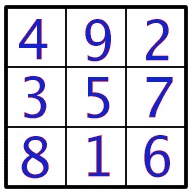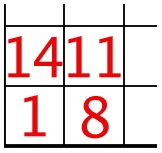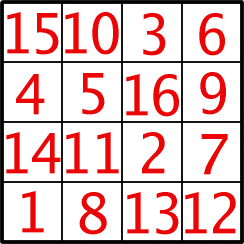Copyright © University of Cambridge. All rights reserved.
'Magic Constants' printed from https://nrich.maths.org/
Show menu
Why do this problem?
This investigation gives a lot of opportunities for a wide range of learners to increase both their spatial and number awareness.
Possible approach
It might be neccesary for the pupils to be introduced to simpler, more common, magic squares.

If there is a problem in identifying the 2 x 2 little squares within the 4 x 4 square the first one in the bottom left hand corner could be selected.

Key questions
Can you tell me about the way you are doing this?
What have you decided to do to the first set of numbers?
Possible extension
Questions 7, 8 & 9 act as a good set of extension activities, further ones could be suggested by the pupils. Then magic squares of a different size could be explored.
Possible support
Some pupils will find it useful to have small square cards with the numbers on a a prepared grid to place them on.
